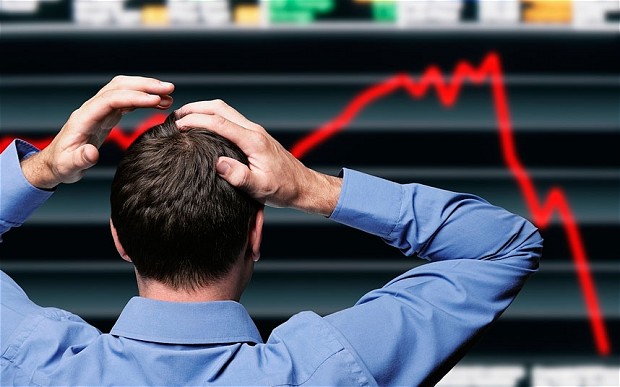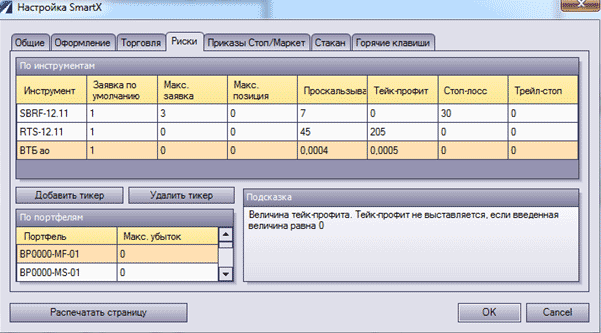How to keep finances in the stock market: Risk management

There is an opinion that the stock market is not much different from a casino - and here and there it is just a game in which “who should” wins, and the chances of an ordinary person are extremely low. In fact, this is not entirely true; moreover, in the field of Internet trading, great attention is paid to risk management - reducing costs and creating means of protection against unplanned financial losses. It is about these tools we will talk today.
Trading robots
Errors in the algorithms and in the texts of programs, the impact on the market of external conditions - all this can cause disruptions in the operation of mechanical trading systems. In a world where mistakes in software are common, and unexpected market reversals need to be foreseen in order not to fly out of it, risk management is indispensable.
')
Quite often, the risk management systems of trading systems perform various checks after the transaction is completed - this is a rather functional and inexpensive model in embodiment. If the robot can quickly figure out what operations are in the negative and stop them - then this is already very good.
The main disadvantage of this approach is obvious - verification is carried out after the fact, so if something goes wrong on a large scale than was intended - the losses can be huge. Therefore, in the field of HFT trade, there are other methods of protection - in particular, pre-trade control. Such control may include analysis of the speed of order execution, limits on time or volume of trades.
The service of providing such functional risk management on brokers' servers would be very popular, but for a variety of reasons, it is extremely difficult to implement. All these functions, traders need to either make their software on their own or separately ordered from the developers of robots.
Trading terminal
If the trader performs operations on the stock market independently, then success or failure will depend only on himself and on the effectiveness of his chosen strategy. Obviously, financial losses, especially in the case of novice investors, most often occur for two reasons: first, the most banal, complexity of the interface of the trading terminal leads to the fact that due to pressing the wrong button (or delayed pressing) there is a loss of money . The second is an incorrectly chosen trading strategy plus the absence of an established policy of working in the market.

In the first case, everything is quite simple - you just need not immediately rush into battle, but pre-study the selected software, the benefit now and the stock exchange and individual brokers provide an opportunity for test trading for virtual money without the risk of incurring real financial losses.
Settings
In the second case, the solution of the problem can be divided into two parts: the imposition of additional conditions on trade and the protection of open positions, as well as the work on optimizing the trading strategy.
Additional terms of trade mean risk management settings, which, for example, prohibit placing new orders and opening positions on a specific account, in case of violation of the established restrictions - a certain loss, etc. In addition, some trading terminals (in particular, SmartX ) can automatically protect open positions - for example, place stop loss / take profit orders that allow you to limit loss or take profits, or a “sliding” stop order that “pulls up” following the price of the asset, allowing you not to rearrange the stop order manually - this helps minimize risks.

Systems similar to those implemented in SmartX have their limitations - in our case, risk management is implemented on the terminal side and works only if it is running (although for some types of orders you can tick the “process on server” box).
Trading strategy
Limiting risks with the help of special trading software settings is in itself excellent, but even such a method will not save the trader from problems if he does not have a well-established trading strategy. Experienced traders in their careers try dozens and even hundreds of different strategies, and having developed a suitable system, they constantly modify and adapt it to changing market conditions.
Beginners here are more difficult - even after reading dozens of books and having plenty of training in virtual trading , it is difficult to immediately start making money on the stock market. That is why the services of various mentors and gurus of stock market trading are quite popular. It is necessary to say that some of them are really professionals, but not a single one, even the most high-quality seminar and course will replace real practice.
To understand exactly how traders earn in the market, you need to see and try to analyze their strategies. Brokers are not profitable for their clients to quickly lose their deposits and leave the exchange, so some of them began to offer services that allow working in conjunction with an experienced trader. There may be several implementation options - for example, sending text signals to buy or sell in special messengers only for a certain company's customers, or fully automatic, when trading is carried out automatically by signals from managers.
Such a model, in particular, is implemented in the EasyMANI system, which unites several dozen asset managers on one platform who publish their strategies and results of trading operations. But simply repeating trading signals is not the most convenient way, because a trader may not immediately see them and miss a profitable deal or not close an unprofitable one.
For automation, the SmartX terminal plug-in mechanism was very useful (for more details, in this topic ), which allowed us to automate the following of signals . As a result, investors can choose any manager from the EasyMANI system, having studied their trading results strategies. Next, the manager performs operations in the terminal, the data about them gets into the system and is transferred to the broker clients' terminals connected to it.

As a result, traders can not only conduct independent work in the stock market, but also use the strategies of more experienced traders.
Why do you need it
Of course, using such funds to earn billions and become a conditional new Soros will not work, but they pursue completely different goals. A variety of risk management tools are aimed primarily at helping traders not to lose their money and limit possible financial damage. An active role in the development of such systems is played by brokers who want to extend the life of customer deposits in the stock market. This situation is beneficial for everyone - traders gain experience and save their money, brokers receive a commission from their operations, the stock market lives an active life, which has a positive effect on the whole economy of the country.
And, of course, you shouldn’t forget about risk diversification - you shouldn’t be attached to only one financial instrument or even a market. Proper distribution of forces and financial resources is another great way to reduce risks and limit potential losses.
Today, we will be happy to answer questions in the comments! If you know any risk management tools that are not included in the text, but are definitely worth it - write, and we will update the topic. Thanks for attention!
Source: https://habr.com/ru/post/215823/
All Articles